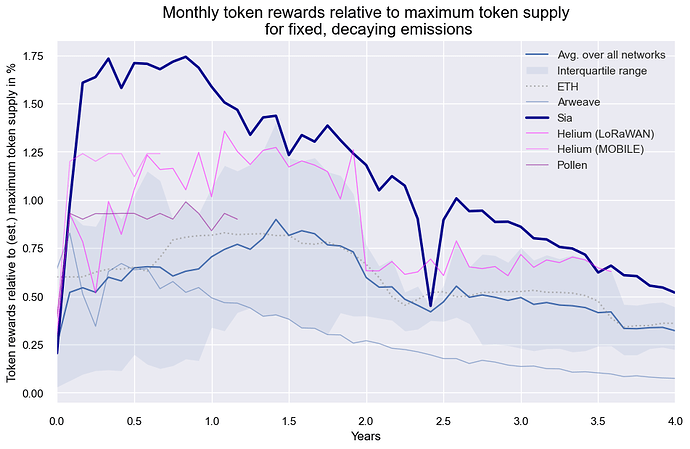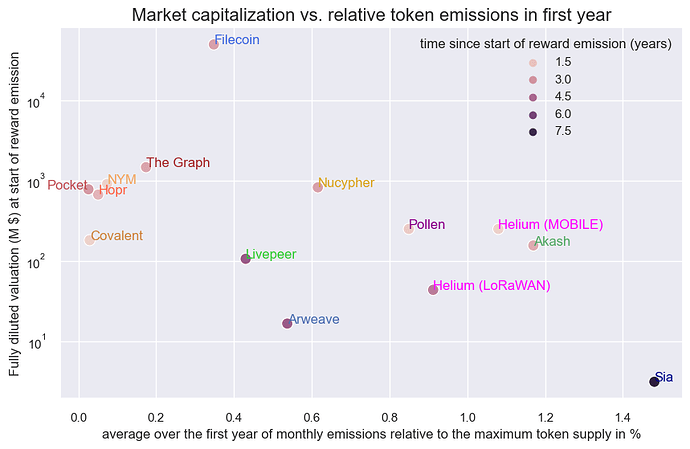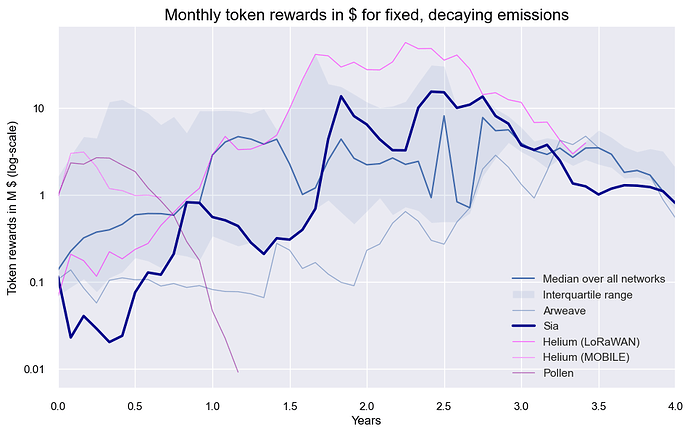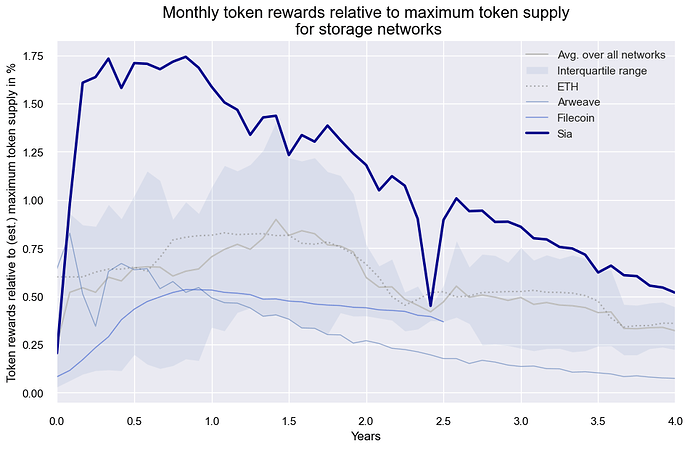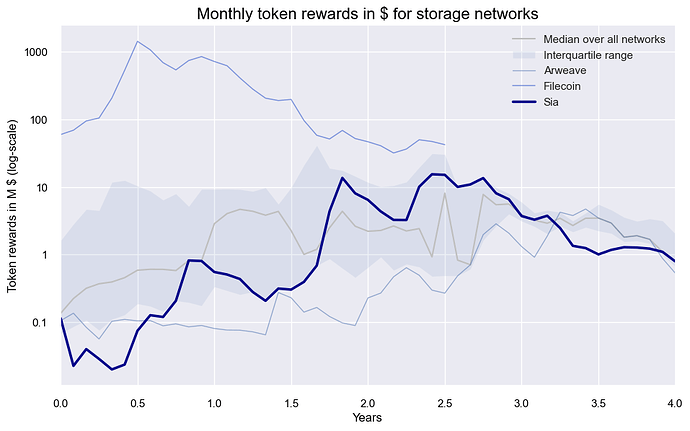We are currently undertaking a large-scale research effort to create better frameworks for token mechanics especially for web3 protocols in the hardware resource provisioning sector.
We have recently published part one, where we have compared emission schedules of various Web3 networks, including of course Sia. You can find the report here.
We wanted to share some additional data with the Sia community though, that is not in the report.
First off, we have classified Sia’s token rewards to be in the category of fixed and decaying emissions: Sia’s block reward emissions have been reduced 1 SC per block since the genesis at 300,000 per block, hence a fixed, only time-based, schedule. The rewards are flat at 30,000 SC per block since the block rewards reached that level after ~5 years, hence the emissions follow a fixed schedule since then, yet with constant emissions (we didn’t add that nuance in our report though as we focused on the initial four years).
Within that category there are currently also the following projects we analyzed:
- Arweave
- Pollen
- Helium (LoRaWAN)
- Helium (5g)
- Render
Filecoin belongs to this category to some extent, too. Details why we classified Filecoin’s overall emissions into the KPI-driven, decaying category though, are part of the report as well.
In comparison to the other projects in this category, Sia had the highest reward emissions over time: they add to ~55% relative to a (fictitious) total SC supply within the first four years. Below chart shows the average (blue line) and the interquartile range (blue shaded) of the monthly token rewards of all Web3 infrastructure networks together with the projects of the fixed and decaying emissions category highlighted:
Contrasting those relative token reward emissions with the valuation of the network at beginning of those rewards, there seems a weak relationship of higher emissions and lower initial valuation of the network:
We also converted those token rewards into dollar-values. Those do not follow the decaying trajectory of the token emissions shown earlier, instead, Sia’s dollar-valued token rewards increase over time and are in the low- to mid-range of the category (and the Web3 infrastructure networks we analyzed overall). This discrepancy of token- vs. dollar-valued rewards is actually true for most of the networks of the fixed-decaying category:
For Sia it might actually be more relevant to compare it to the networks providing similar services versus comparing it to projects with similar token emissions. So here we go:
In contrast to rewards on Arweave and Filecoin, Sia’s rewards are not paid to storage providers of the Sia network, which limits the comparison. More information around caveats like this and the data are available in this repo that also contains the paper with further details on the published report.
We hope this information yields some insightful information for the Sia community and are open to your feedback. What would be some additional data you would want to see / topics to dive into?
